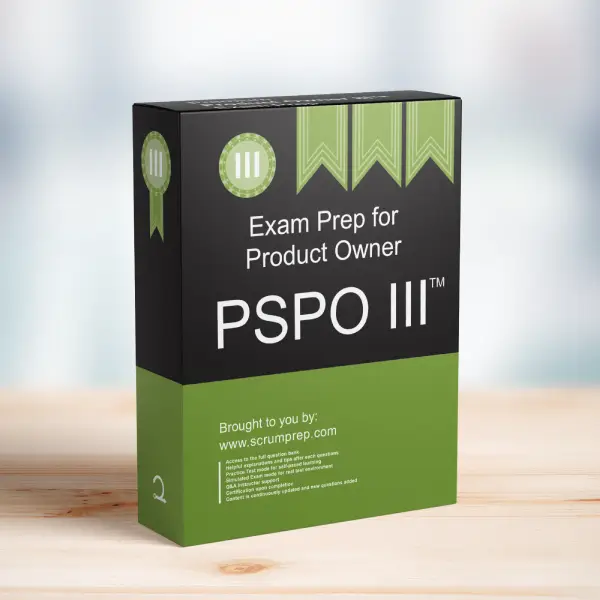The Importance of Product Vision and Strategy from the Perspective of the Product Owner
A clear product vision and strategy are essential components of successful product development. For a Product Owner, the product vision provides a guiding star, ensuring that the entire Scrum Team is aligned with the ultimate goal. The strategy outlines the approach to achieving that vision, breaking down the steps necessary to deliver value incrementally.
Exam Question
Explain the importance of product vision and strategy from the perspective of the Product Owner.
Based on your experience, describe a technique you have used as a Product Owner to inform the Scrum Team and stakeholders about the product vision or strategy.
What specific purpose did the technique serve, and how did it help you?
Explanation
Importance of Product Vision and Strategy
- Alignment and Focus:
Significance: The product vision serves as a constant reference point, ensuring that the Scrum Team and stakeholders remain focused on the end goal. It provides a clear understanding of what the product aims to achieve, aligning the efforts of all involved parties. The strategy complements the vision by outlining the path to reach that goal, helping to prioritize work and make informed decisions throughout the development process.
Example: A strong product vision helps prevent scope creep by providing a framework within which all decisions are made. When new ideas or features are proposed, they can be evaluated against the vision and strategy to determine if they align with the long-term goals. - Inspiring and Motivating the Team:
Significance: A compelling product vision can inspire and motivate the Scrum Team, giving them a sense of purpose and direction. When team members understand the broader impact of their work, they are more engaged and committed to delivering high-quality results. The strategy helps in breaking down the vision into achievable milestones, making progress visible and keeping the team motivated.
Example: A well-communicated vision can turn routine tasks into meaningful work. When developers see how their contributions are part of a larger goal, it can enhance their motivation and satisfaction. - Guiding Decision-Making:
Significance: Both the product vision and strategy are critical in guiding decision-making. They provide a framework for evaluating options and making choices that align with the overall objectives of the product. This ensures that every decision made by the Product Owner, Scrum Team, and stakeholders is consistent with the long-term goals of the product.
Example: When faced with trade-offs, the Product Owner can refer to the product vision and strategy to determine which options best support the product’s goals, ensuring that resources are allocated effectively.
Technique to Inform the Scrum Team and Stakeholders about Product Vision or Strategy
Using a Vision Board
- Description of the Technique:
A Vision Board is a visual tool that summarizes the product vision and strategy on a single page. It typically includes key elements such as the target audience, user needs, the product’s unique value proposition, and the high-level strategy for achieving the vision. The Vision Board is shared with the Scrum Team and stakeholders at the beginning of the project and is updated as necessary to reflect any changes in the vision or strategy. - Specific Purpose:
The Vision Board serves as a constant reference point, ensuring that everyone involved in the project has a shared understanding of the product’s direction. It helps to align the team and stakeholders, fostering a common language and understanding of the product’s goals. - How It Helped:
In my experience as a Product Owner, the Vision Board was invaluable in keeping the team focused on the big picture. It was particularly helpful during Sprint Planning and refinement sessions, where we used the Vision Board to ensure that the Product Backlog items were aligned with the overall vision and strategy. Additionally, the visual nature of the Vision Board made it easier to communicate complex ideas to stakeholders, facilitating more effective discussions and decisions.
Relevance to the PSPO III Exam
For Product Owners preparing for the PSPO III exam, understanding the importance of product vision and strategy, and being able to communicate them effectively, is crucial. This scenario tests the ability to use practical techniques to align the Scrum Team and stakeholders with the product’s goals.
Key Takeaways
- Alignment and Focus: A clear product vision and strategy ensure that the Scrum Team and stakeholders are aligned and focused on the product’s goals.
- Inspiration and Motivation: A compelling vision can inspire and motivate the team, leading to higher engagement and better results.
- Decision-Making: The product vision and strategy guide decision-making, ensuring consistency with the long-term objectives.
- Vision Board Technique: A Vision Board is an effective tool for communicating the product vision and strategy, fostering alignment, and supporting decision-making.
Conclusion
Product vision and strategy are essential for guiding the Scrum Team and stakeholders toward a successful outcome. By using techniques like a Vision Board, a Product Owner can effectively communicate the product’s goals and ensure that everyone involved is aligned and focused on delivering value. For more insights on managing product vision and strategy and to prepare for the PSPO III exam, visit our PSPO III Exam Prep.



